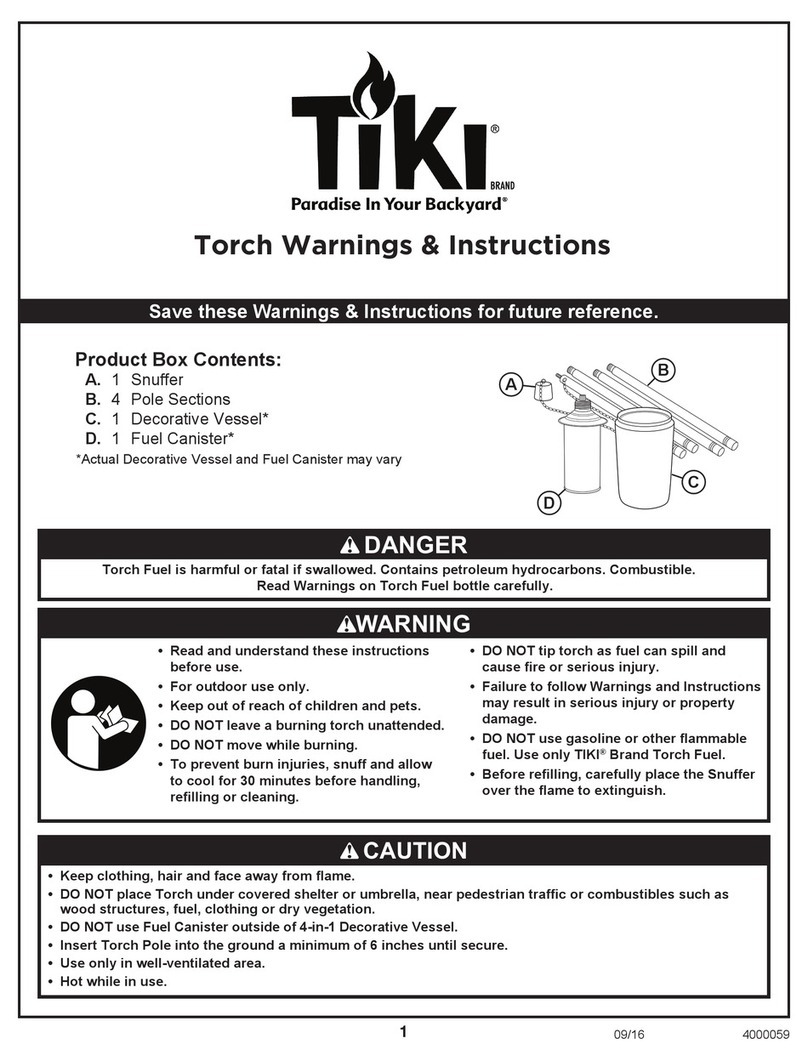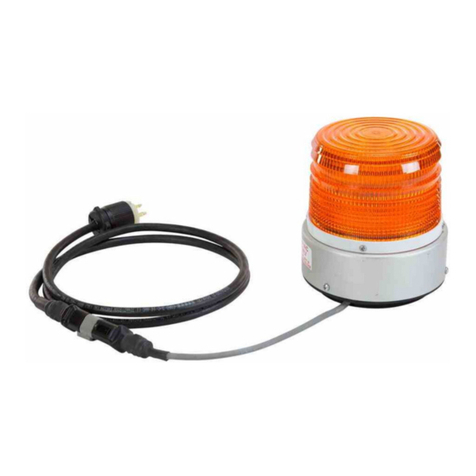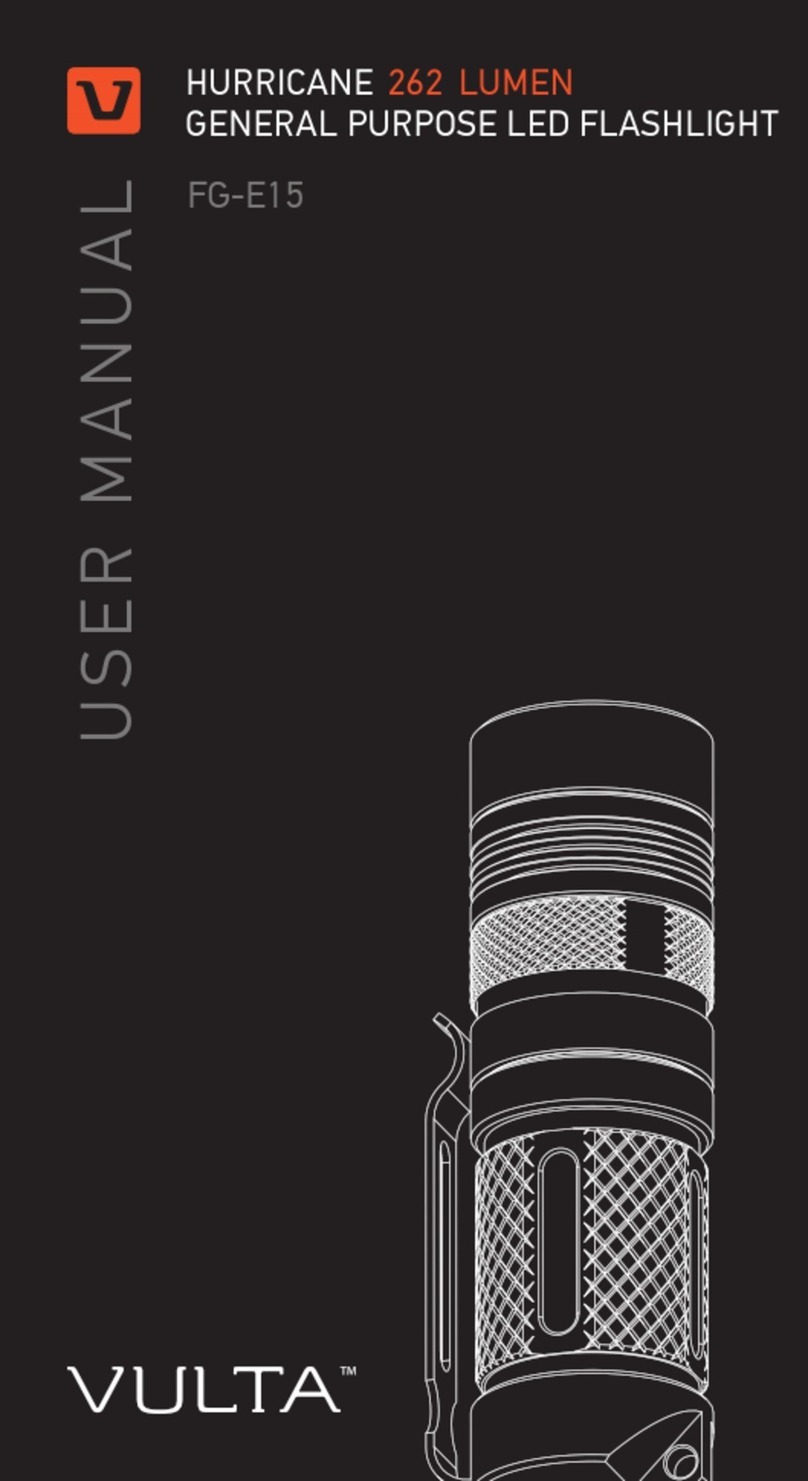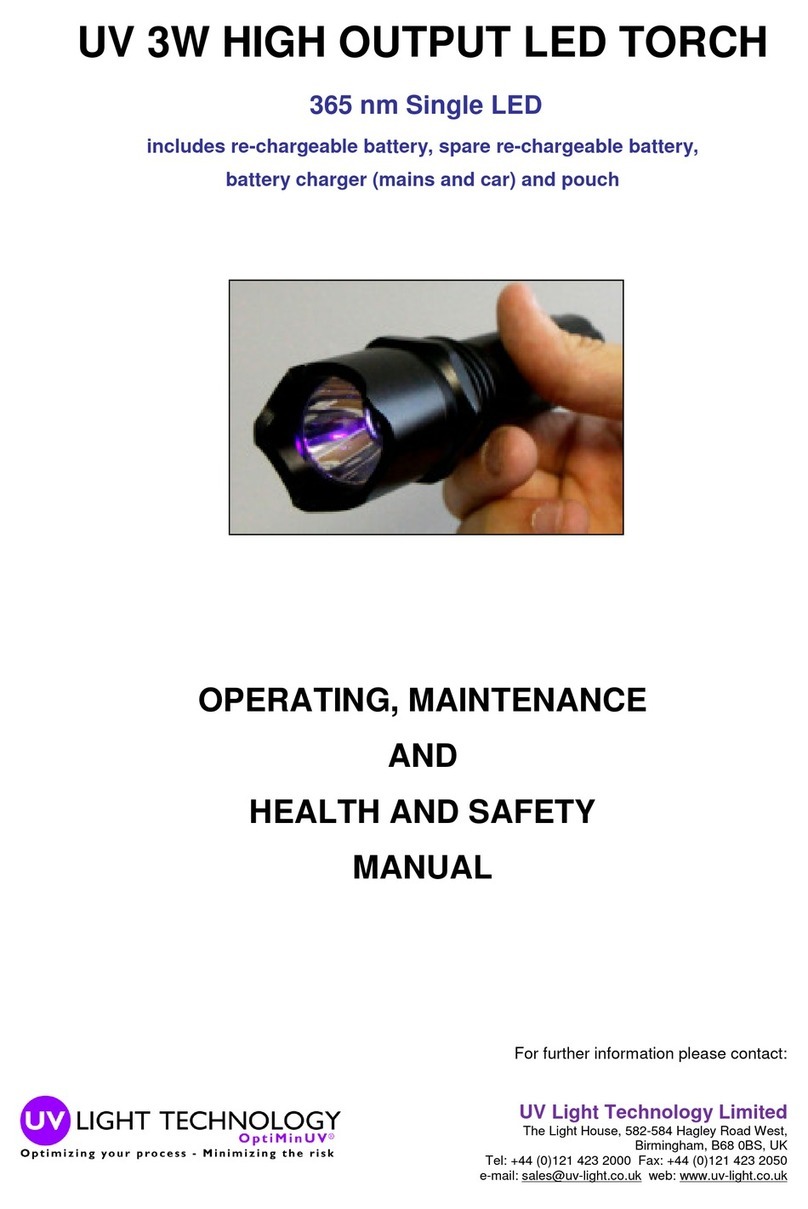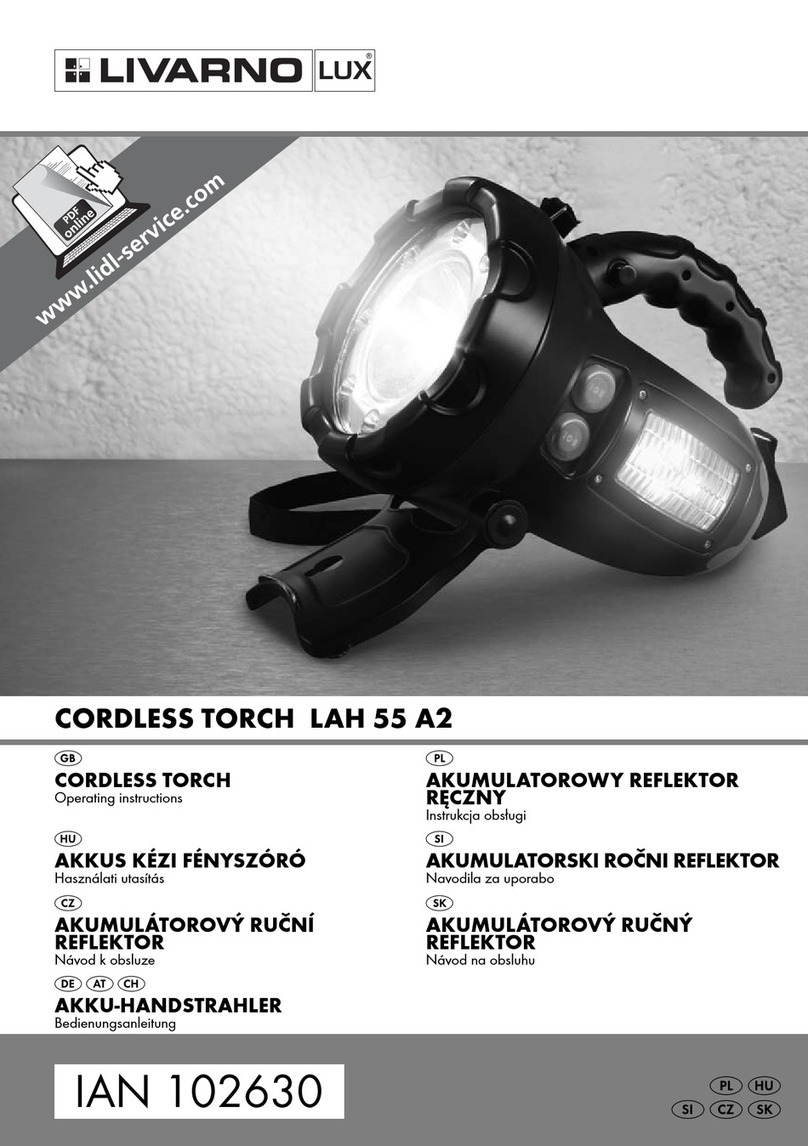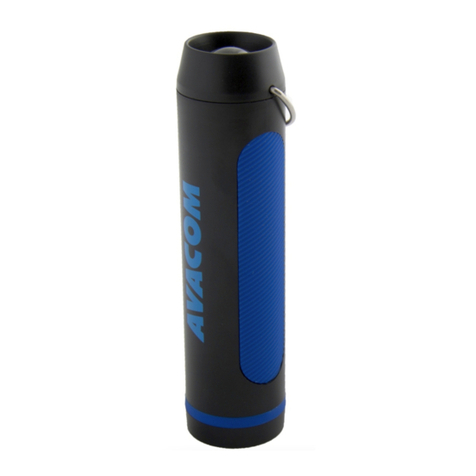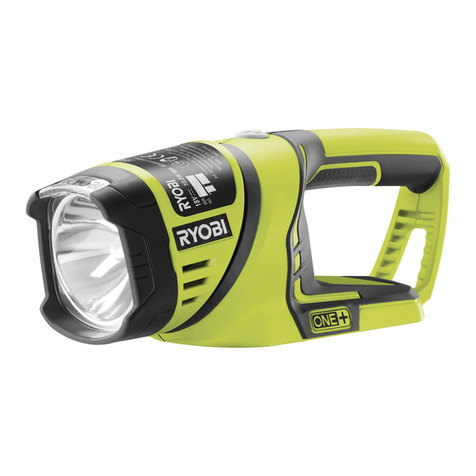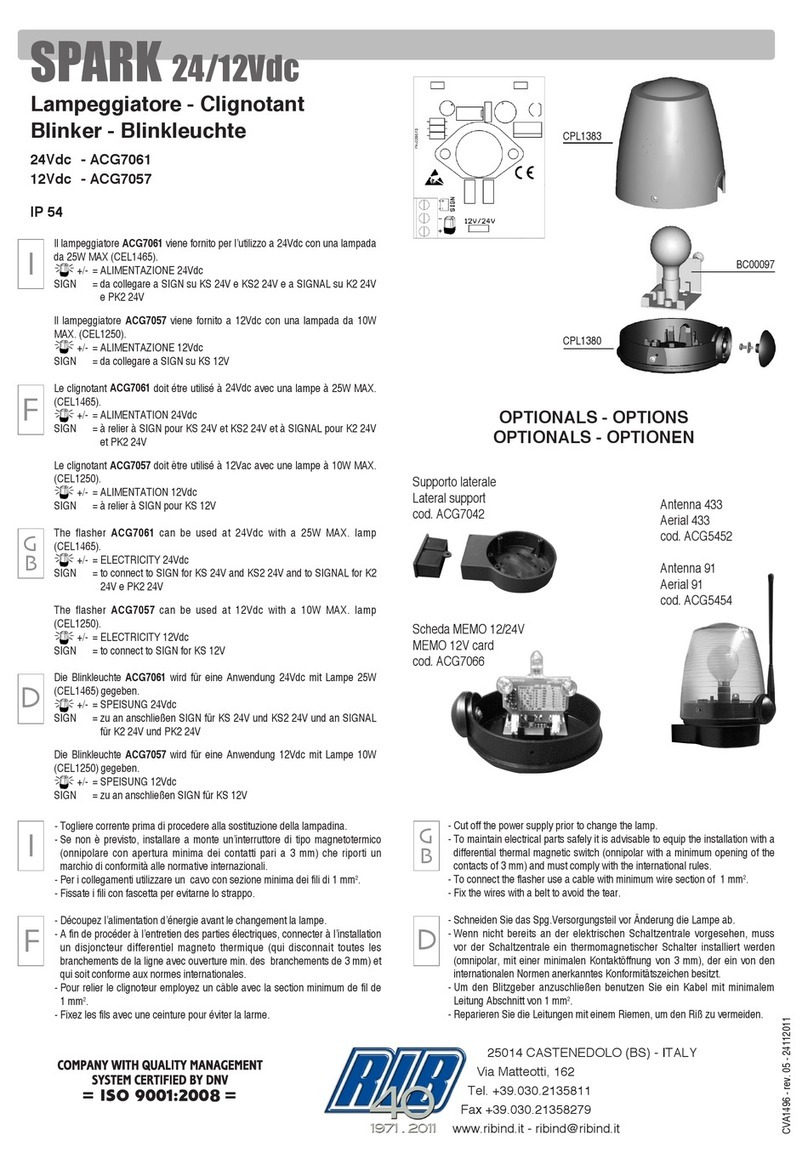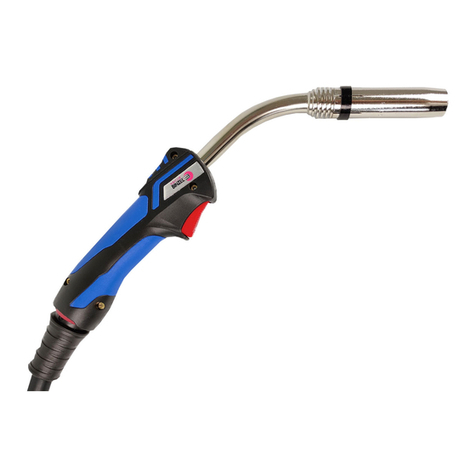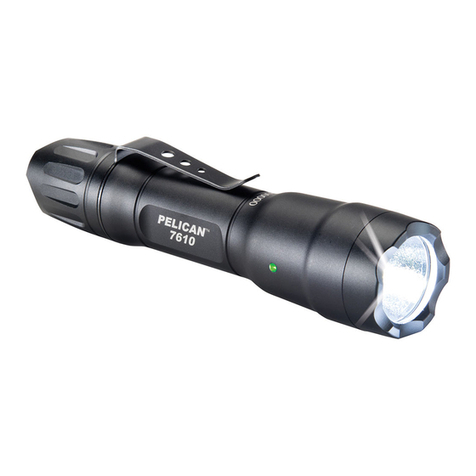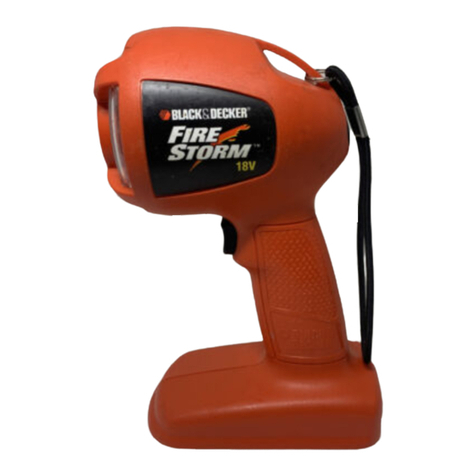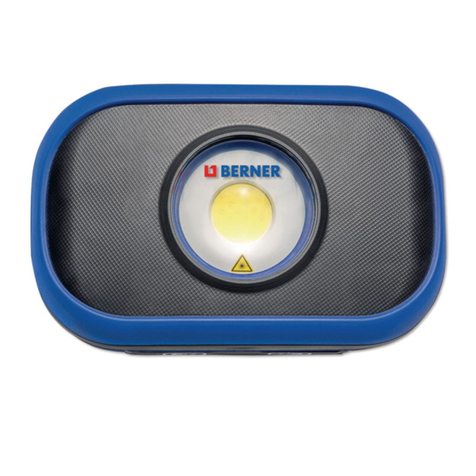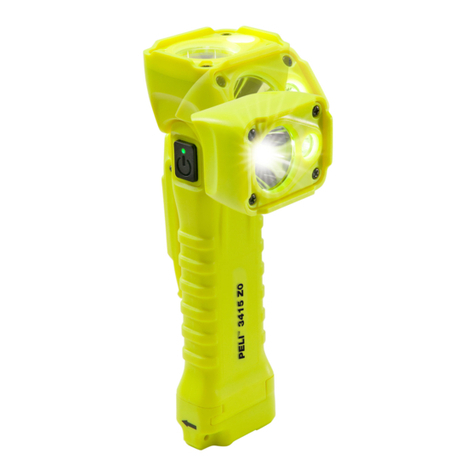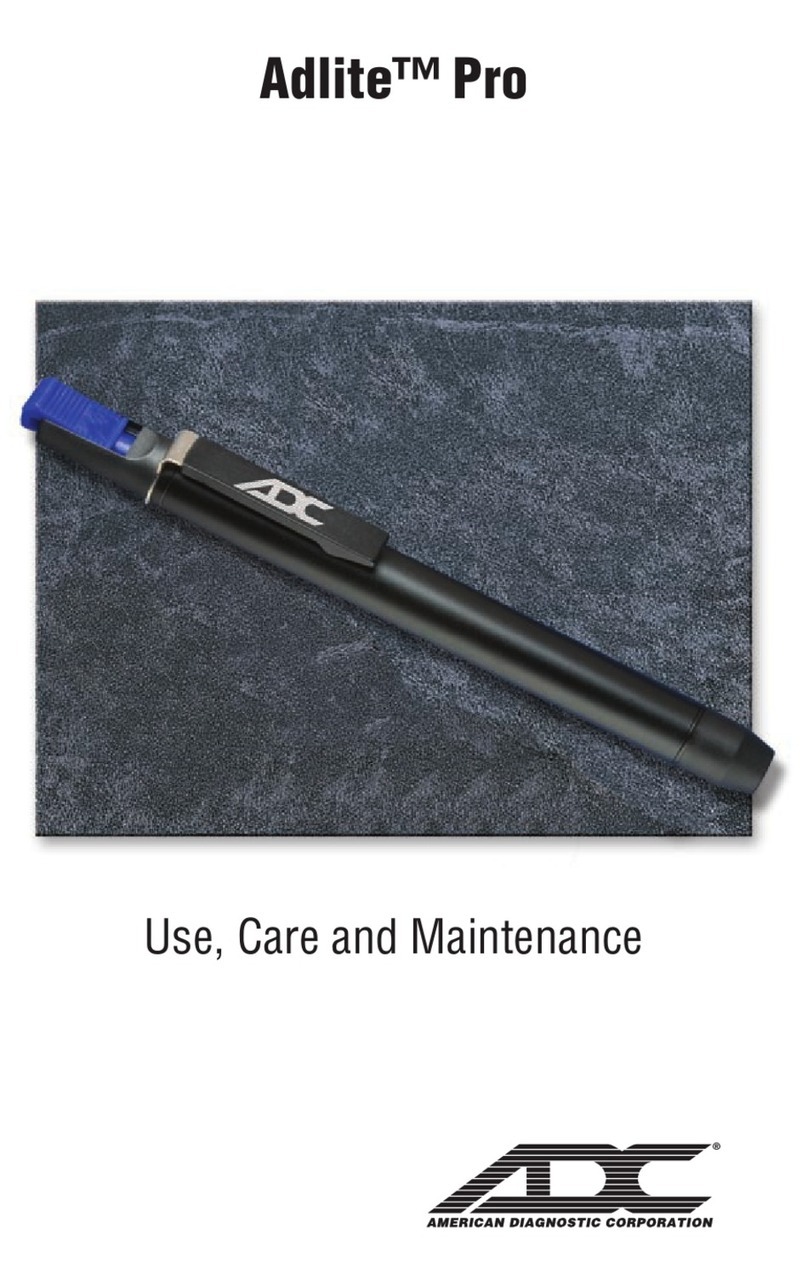
Fax: +44 (0)121 423 2050 Web: www.uv-light.co.uk
10
Warning labels and signs - Should be used to indicate the presence of UV
light which could result in persons being exposed to levels of UV light
exceeding the ELVs, or significant personal exposure.
Routine maintenance - Essential to ensure optimum performance and minimum risk. The
recommended procedures and intervals should be strictly implemented. See section 5.
Engineering control measures
Reduction of reflected UV light – Many surfaces, especially smooth, highly reflective or light
coloured, are good reflectors of UV light. To reduce reflected UV light some surrounding area
surfaces could be painted in a dark matt colour.
Containment – Indiscriminate emission of UV light into the workplace must not be allowed.
The use of screened areas may be appropriate. If used screens must be made of a suitable
UV blocking material, well maintained, inspected regularly and replaced as necessary.
Personal protective equipment
Protection of the skin - Areas of skin usually at risk are the backs of the hands, forearms, face
and neck, as other areas are usually covered by clothing. Hands can be protected by wearing
gloves and arms can be covered by long sleeves, using material with low UV light transmission.
In general, darker coloured, heavier fabrics with a closed structure offer a higher level of
protection than light coloured, light weight fabrics with an open structure.
Face can be protected by a UV blocking face shield, available from UV Light Technology
Limited and this will also provide eye protection.
Particular attention must be paid to prevent gaps in protective clothing that commonly occur
around the neck and wrist areas.
Protection of the eyes - We recommend that where personal UV light exposure could be
significant, all persons affected should always wear UV blocking spectacles or faceshield.
These are available from UV Light Technology Limited and will ensure protection against any
residual risk.
